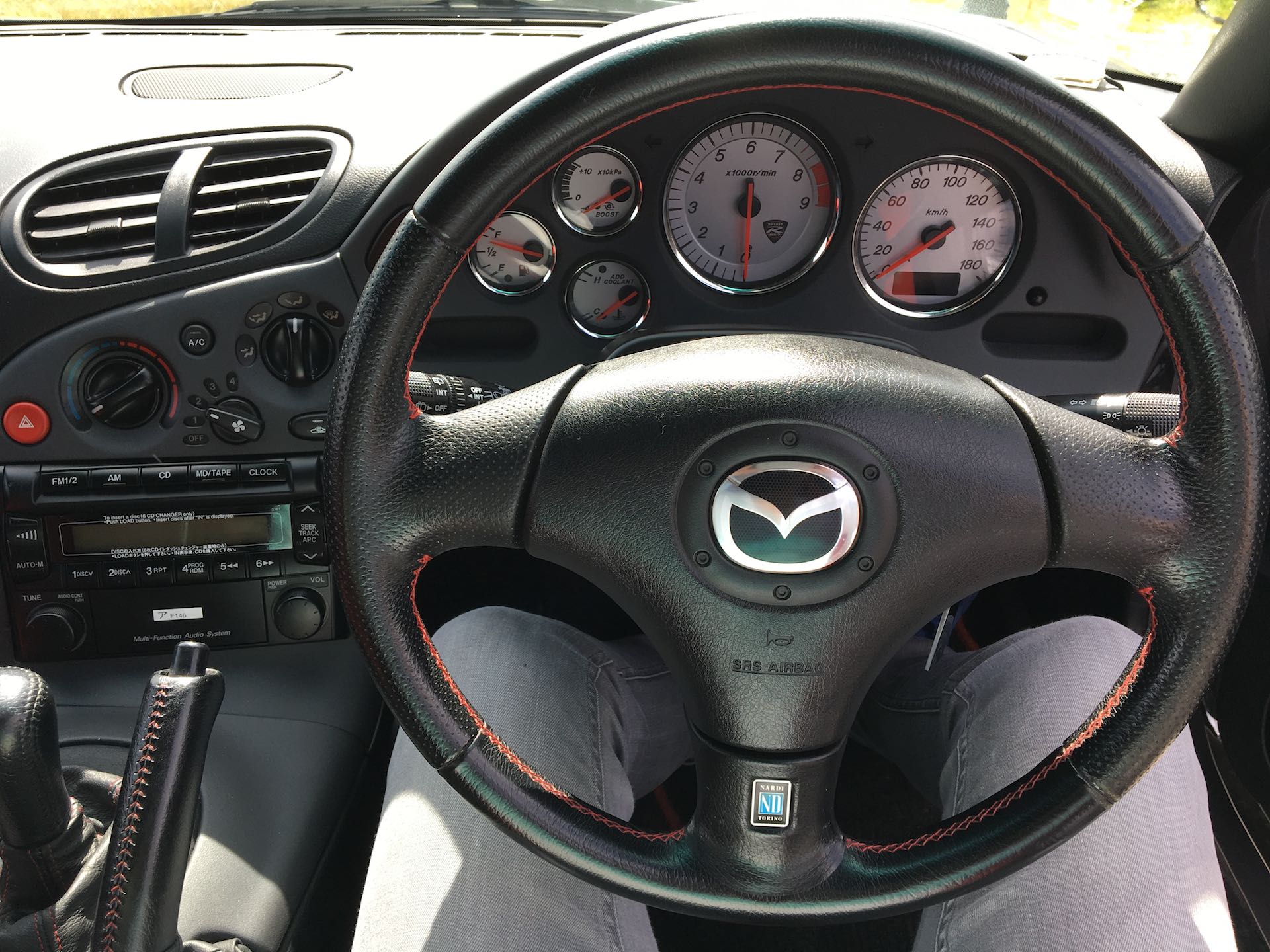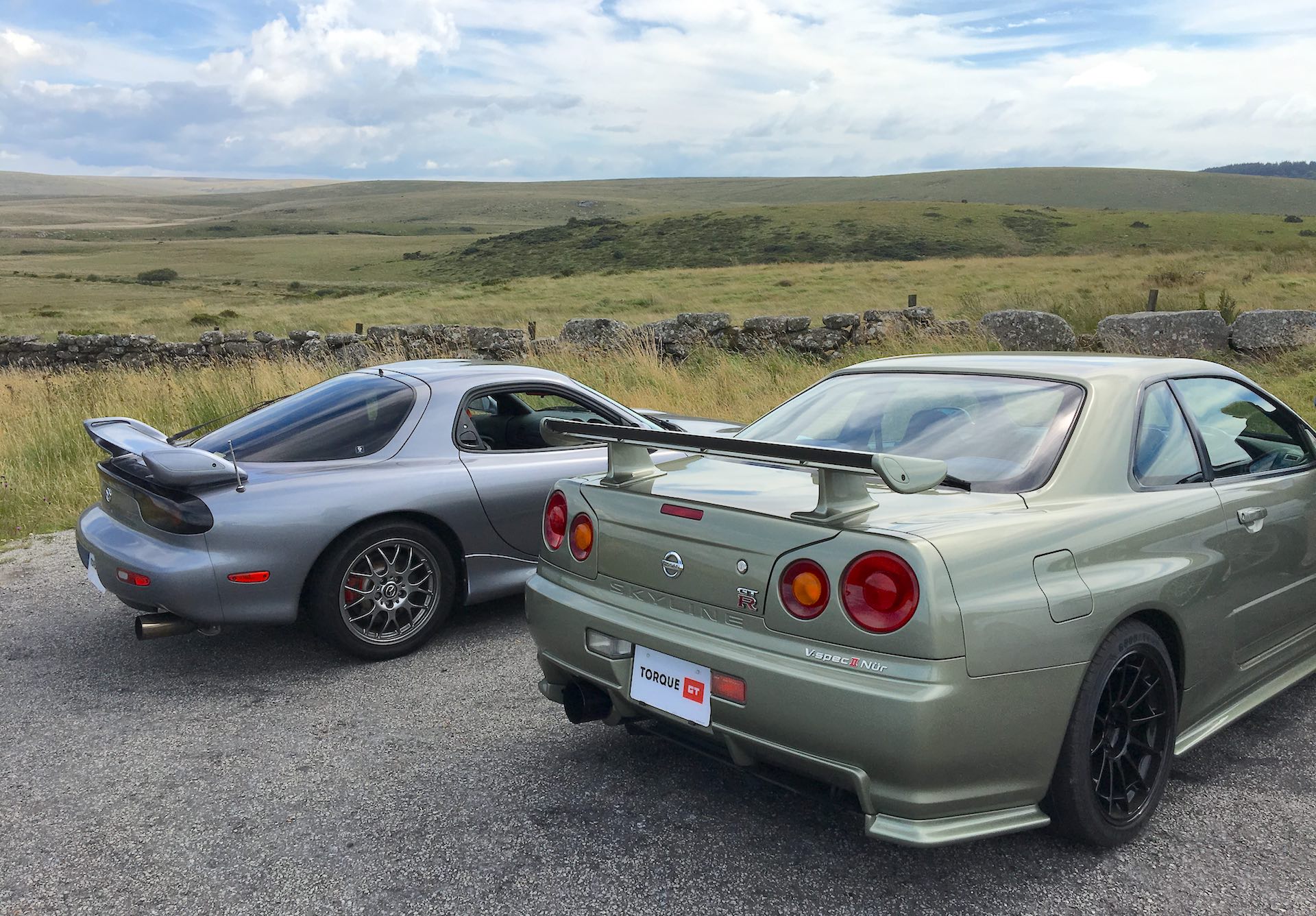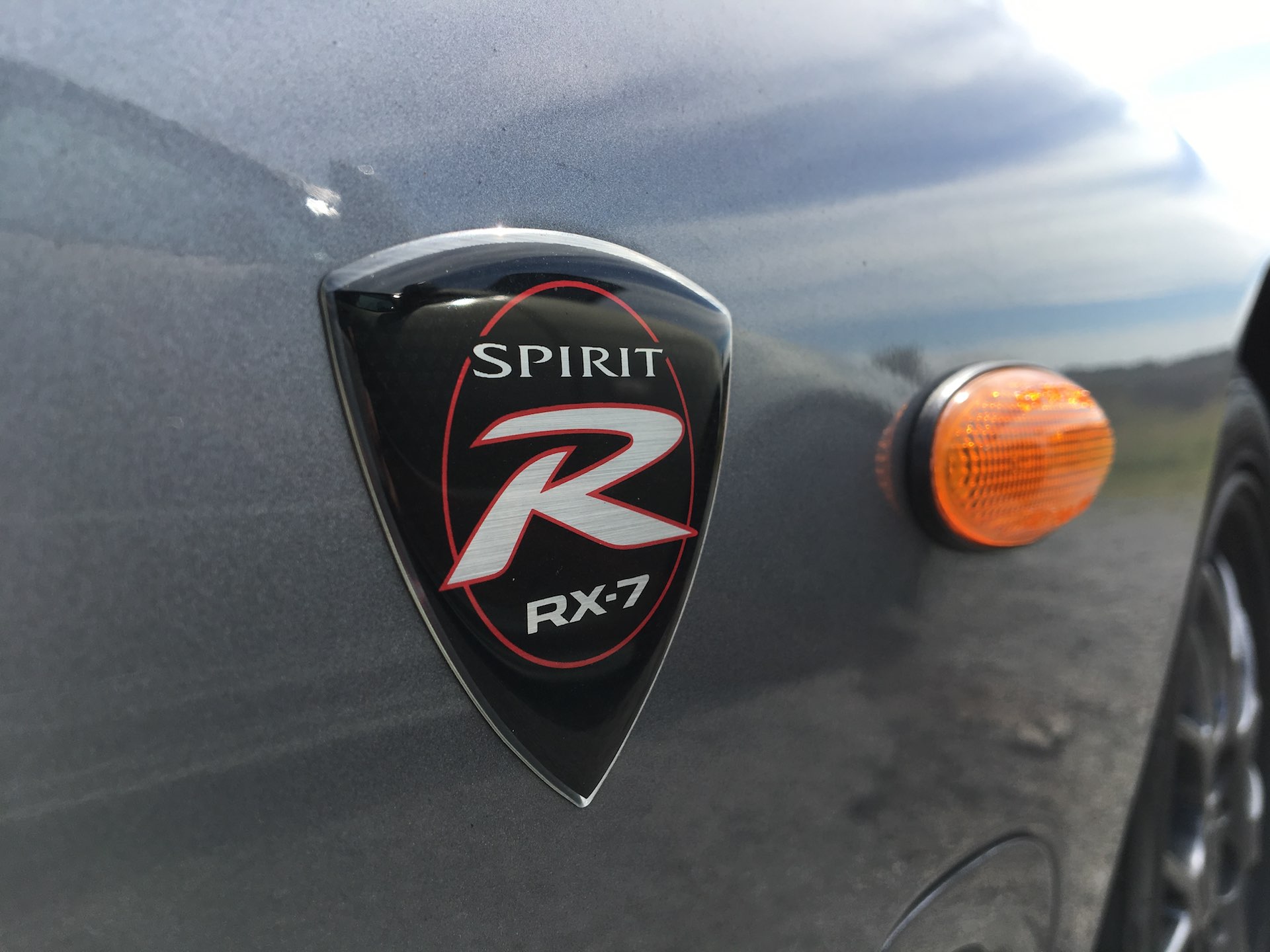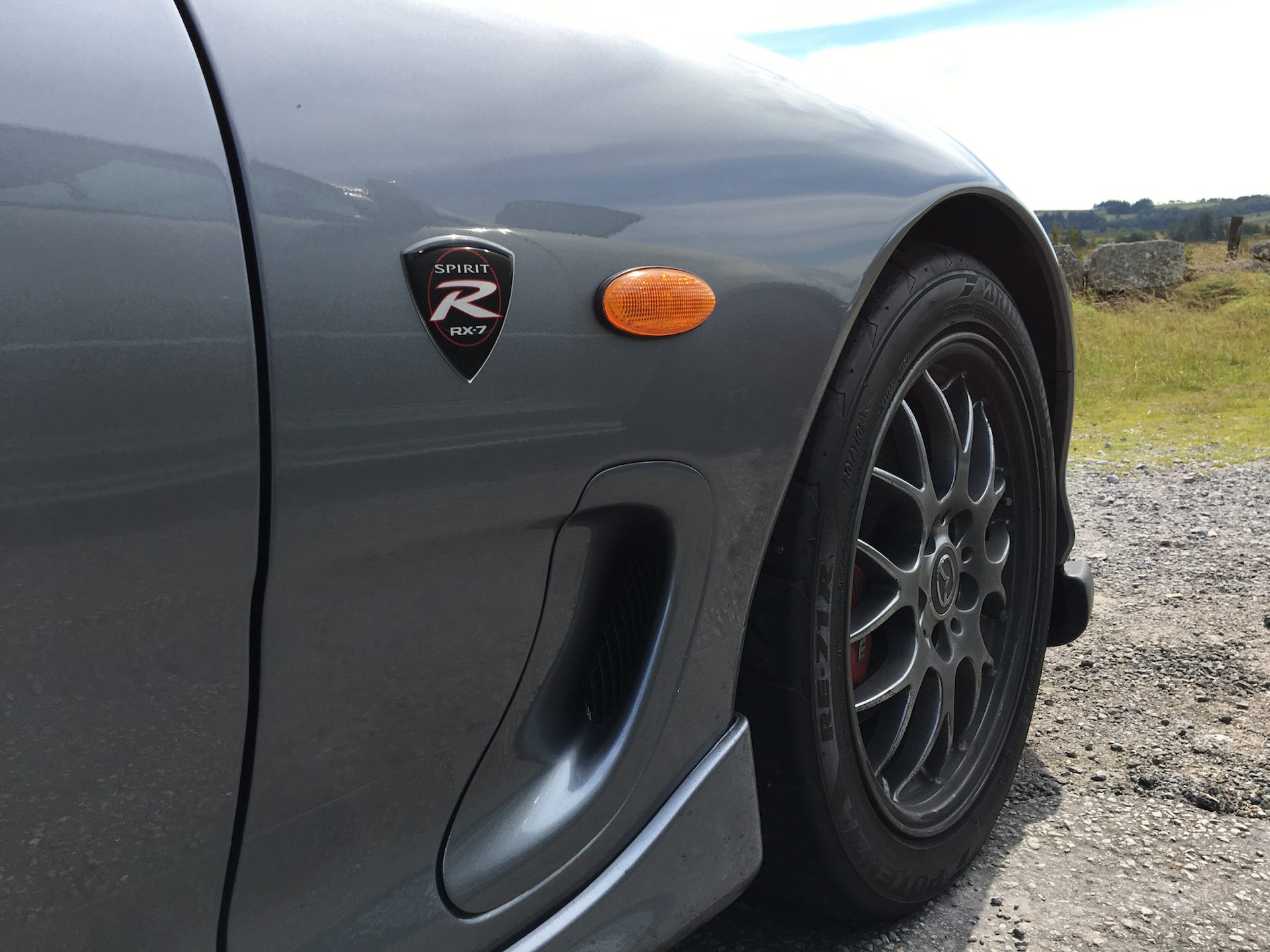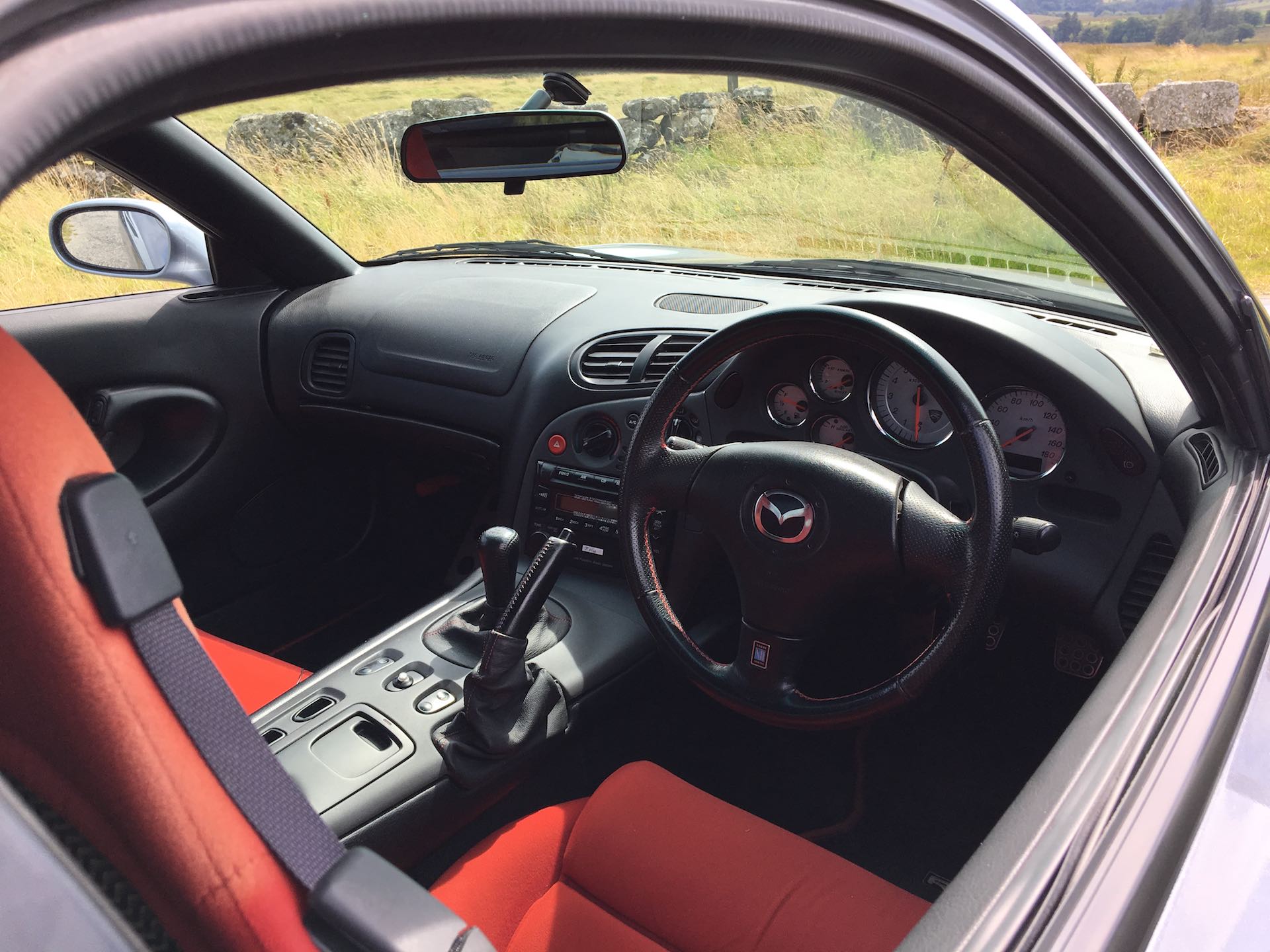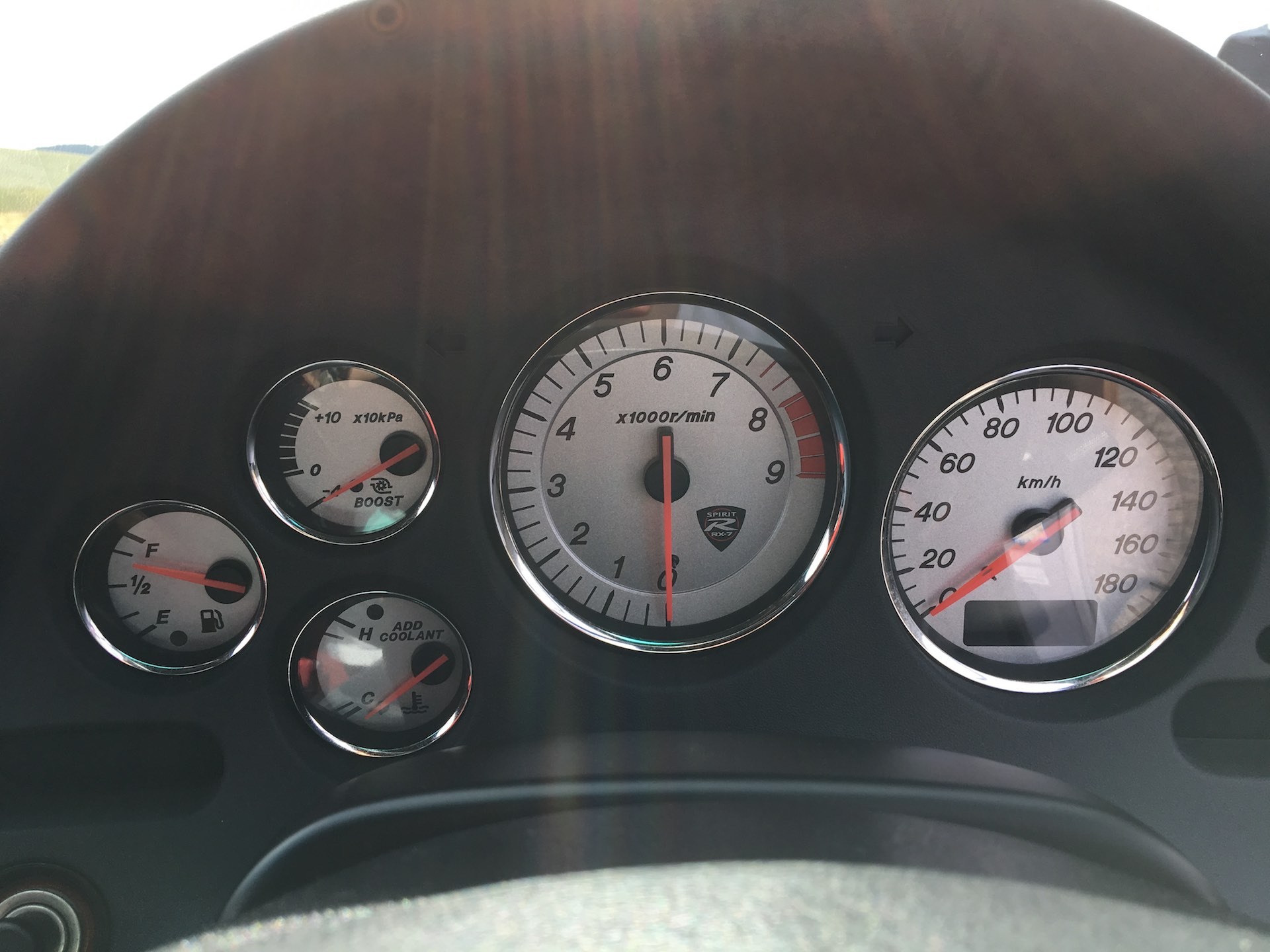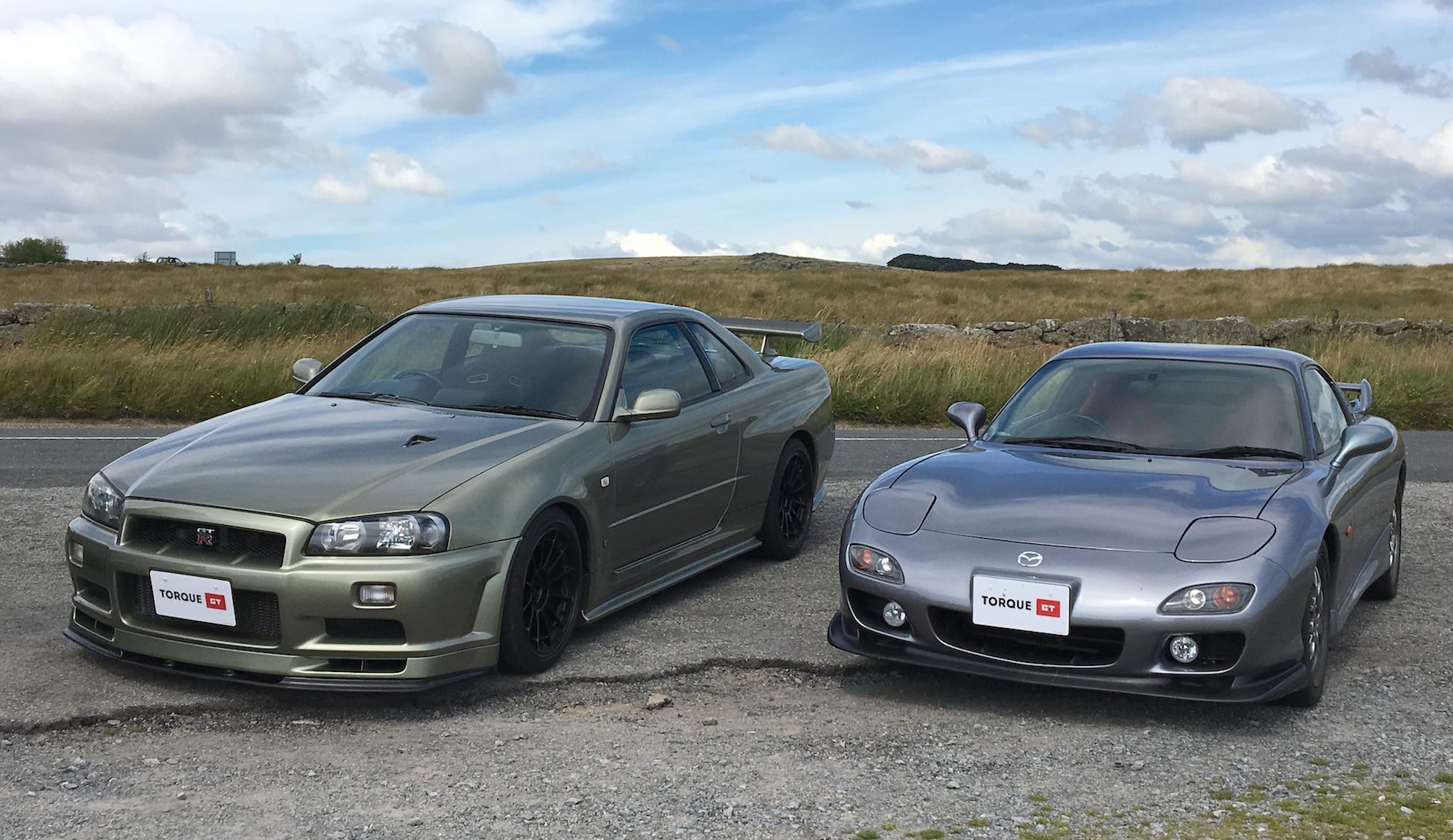Sometimes when you jump into a car and drive it for the very first time, you already have a solid idea of how it’s going to feel.
Maybe you’ve driven all the previous models, noted the strong family feel and aren’t expecting any major upsets. Or maybe you’ve driven a ton of cars from the same auto maker using that engine and transmission combination.
But driving something totally alien to you is the most fun. And the FD RX-7 Spirit R I drove a couple of years ago for a video alongside an R34 Nissan R34 GT-R definitely fitted into that category.
Obviously I was excited to drive the R34, too, particularly since it was a rare Nür version. But I’d already driven various R34s so wasn’t expecting it to throw any curve balls.
Related: Japanese Man Screams At Thieves Stealing His Prized Mazda RX-7 As He Watches From The Balcony
However, I had no frame of reference for the RX-7. I remember reading good things about the FD-generation cars when they were launched in 1992, and I always liked the way they looked, but they had already gone off sale by the time I started writing for magazines at the turn of the century so I’d never even sat in one.
My sole rotary experience then was driving the 2000s RX-8 coupe. And though I loved the idea of the RX-8, I never really found them that exciting. I could never have imagined what I was missing.
And I couldn’t have found a better factory-spec RX-7 to introduce me to the model than the Spirit R. Built right at the end of the RX-7’s life and limited to just 1,500 units, the Spirit R came loaded with all of the best bits seen on Mazda’s previous limited-edition FDs.
The car I drove was a Type A version, which meant it had bright red carbon-shell Recaro buckets up front and no seats in the back, Bilstein suspension, cross-drilled brake discs, BBS alloy wheels and an adjustable rear spoiler.
But even stripped of all those fancy bits, I’d probably still have been blown away because the RX-7 gets the basics so right. For some reason I was expecting it to feel like a regular coupe with a fairly droney tuneless engine. But what I found was a proper sports car that oozed character from every pore. The driving position is perfect, the steering is full of feel and that twin-turbo 13B rotary is huge fun.
And because those turbos work sequentially, the power delivery is far less on/off than I was expecting. At low revs the first turbo spins early filling the hole in the torque curve you get with many powerful turbocharged cars, then at 4000 rpm the big turbo kicks in and hurls you down the road. The one area it gives second best to the RX-8 is its ability to spin towards double figures on the big central rev counter. The newer naturally aspirated engine revs to 9000 rpm, compared with 8000 rpm for the more powerful, turbocharged RX-7.
Mazda rated these later RX-7s at 276 hp, up from 252 hp in the early cars (237 hp in Europe), and though neither of those numbers, or a mid-5-second 0-60 mph time, will win any bragging contests today, a circa-2800 lb (1273 kg) curb weight means it feels much stronger.
RX-7 production finished in 2002 and the RX-8 that picked up the rotary baton the following year was all done by 2012. Mazda has intermittently made noises about bringing the RX-7 back, but we’ve seen nothing concrete, and given the car buying public’s lack of interest in sports cars, it would probably have to be a sporty crossover or a tie up with another carmaker much like the BMW Z4 and Toyota Supra program.
As for Mazda’s rotary technology, that was meant to be returning as a range extender on the electric MX-30 crossover, but recent reports suggest Mazda might be backtracking on those plans.





